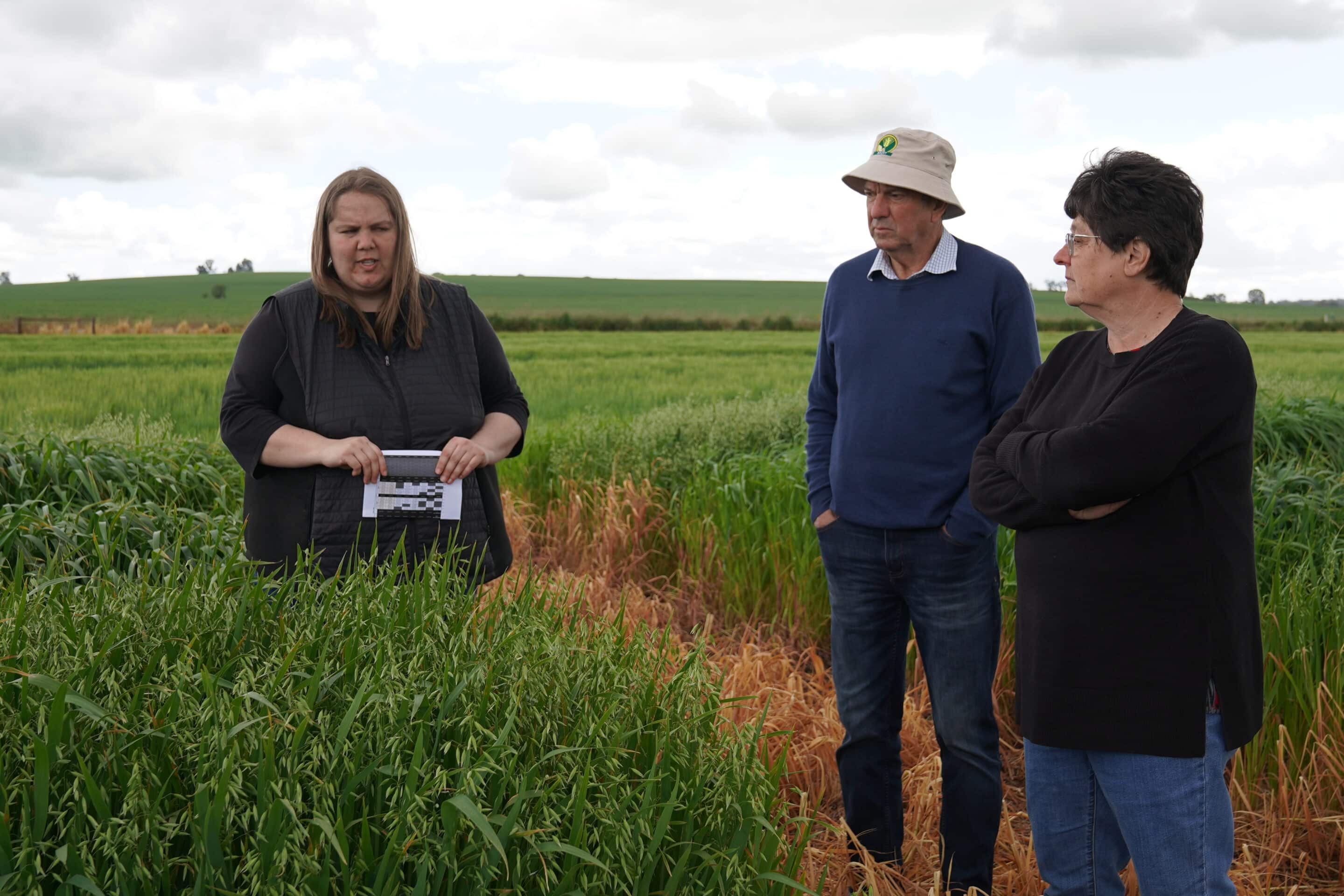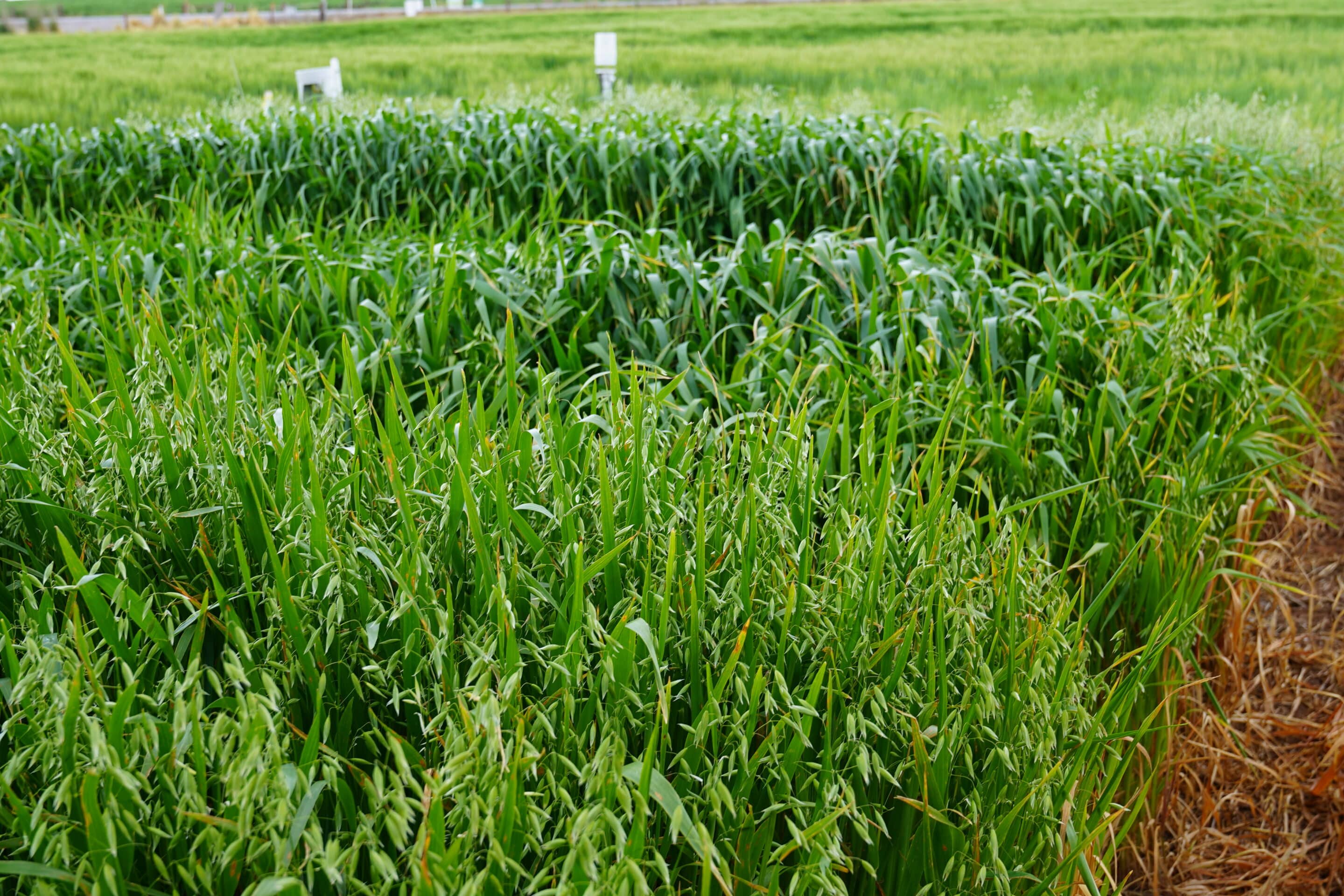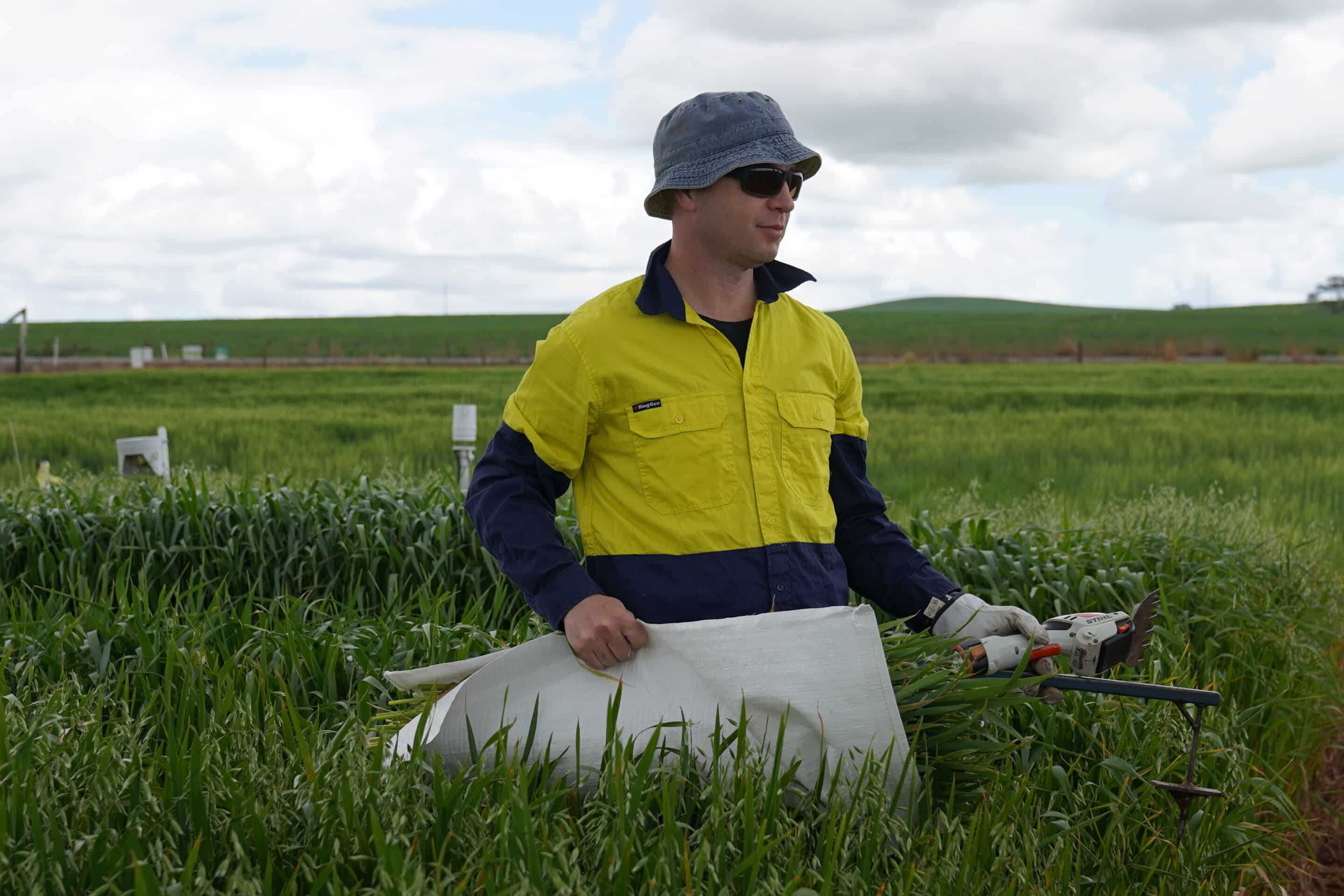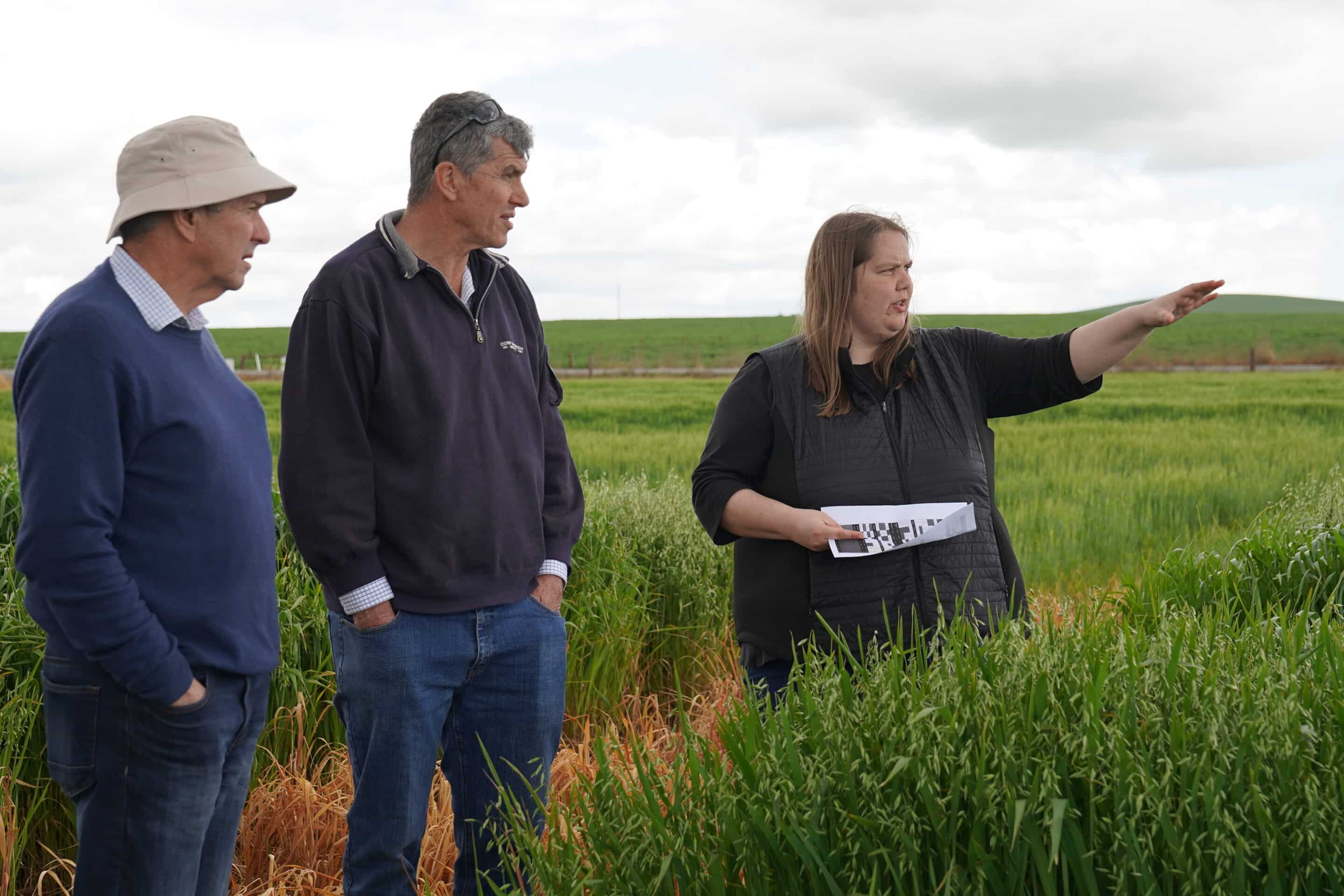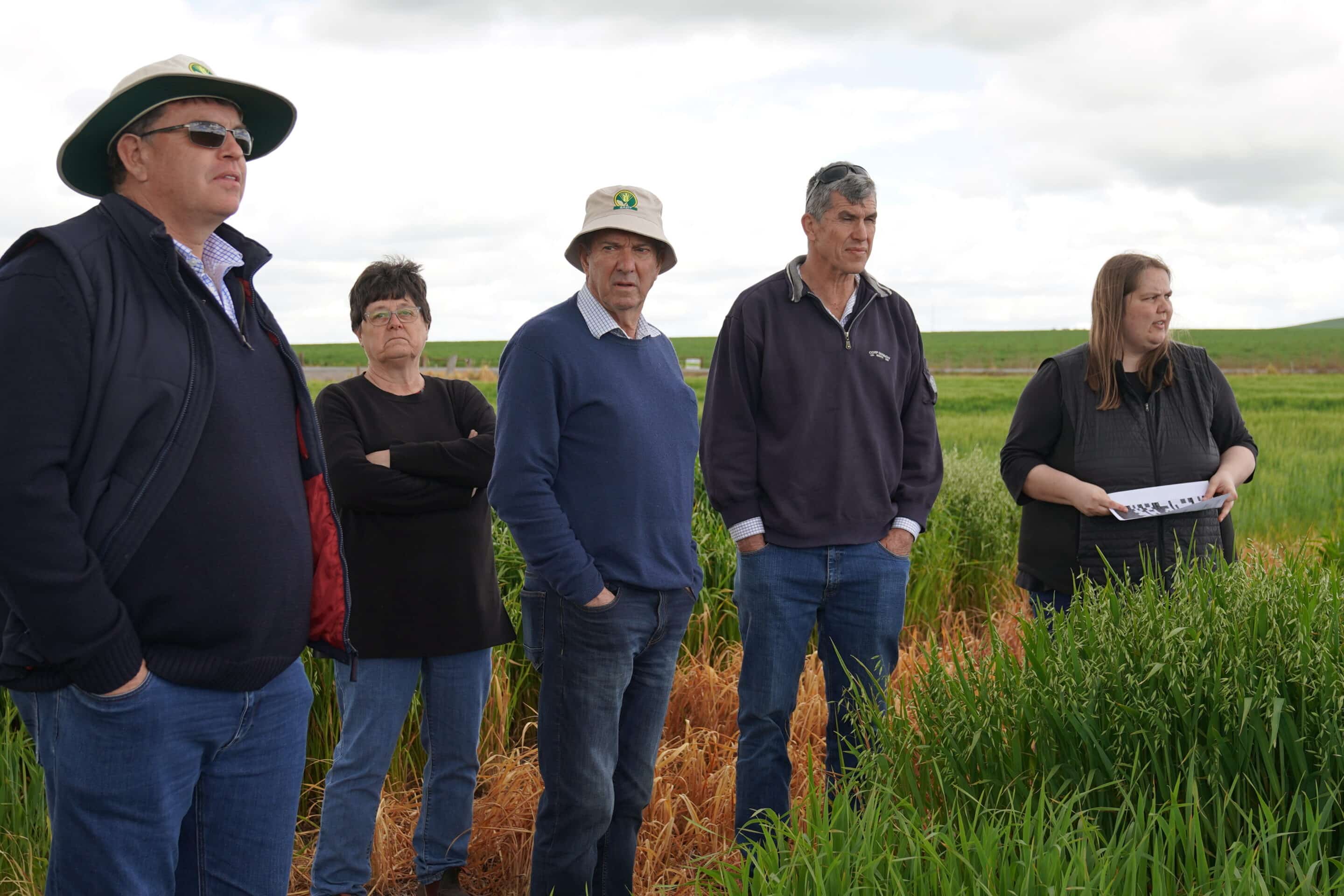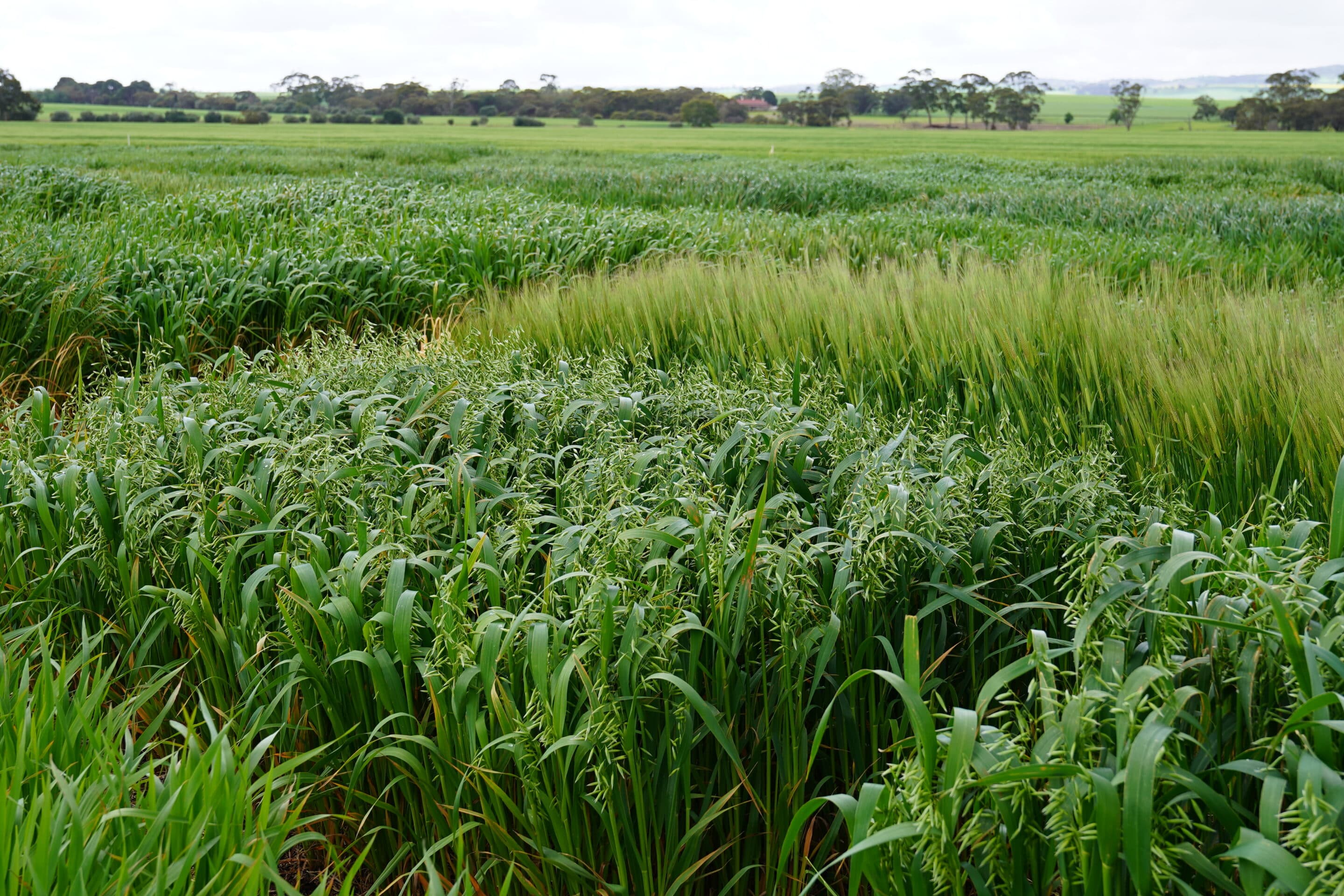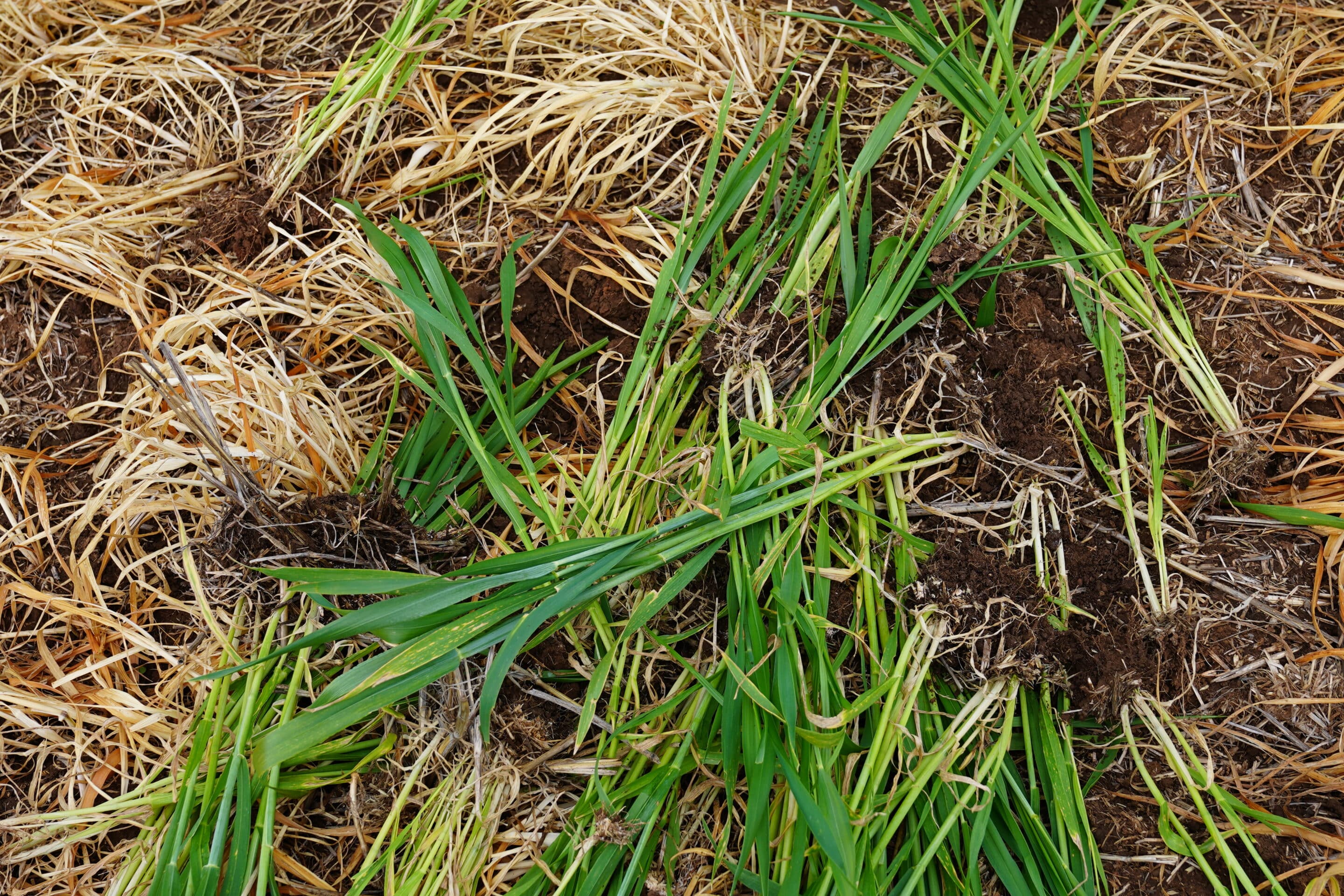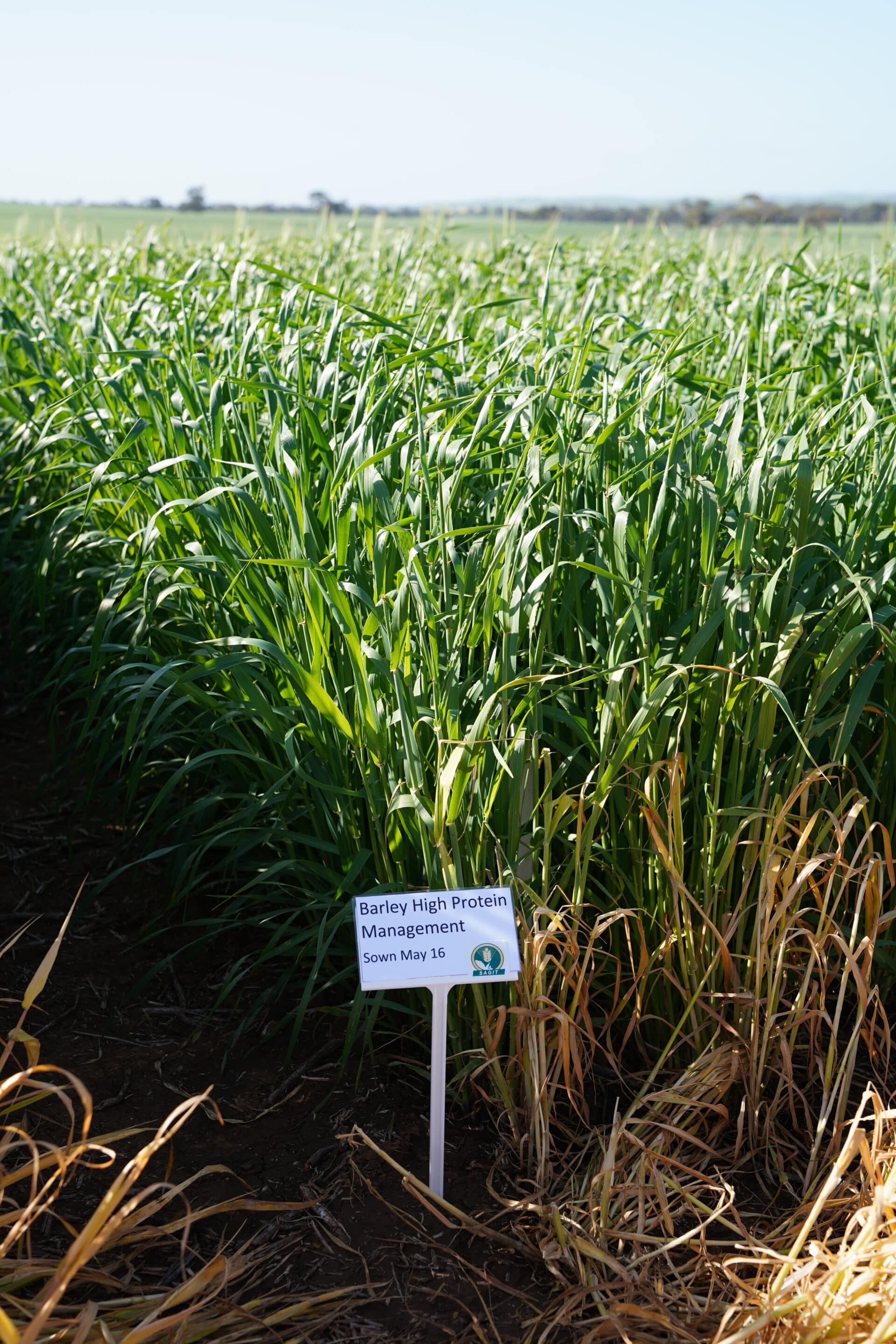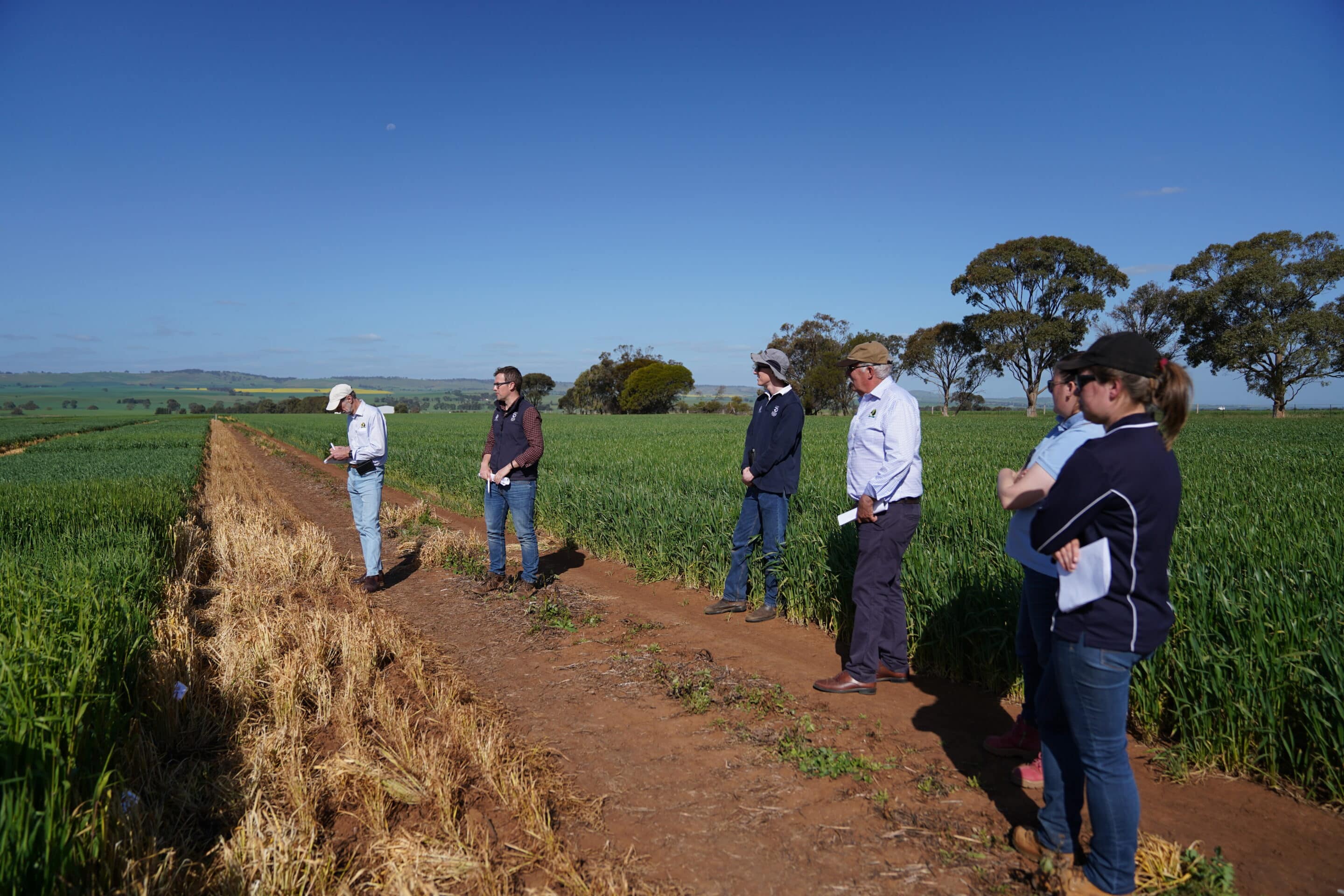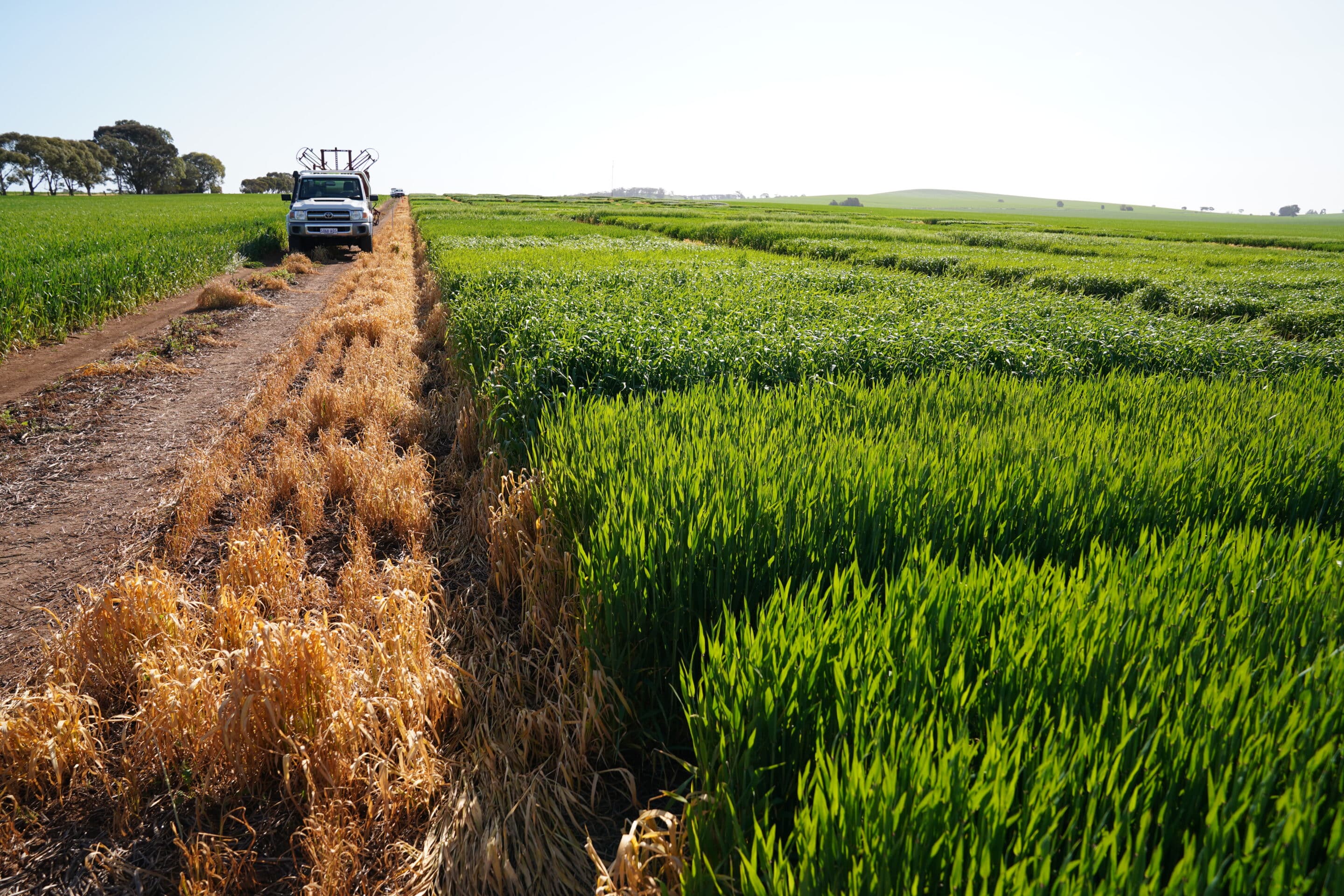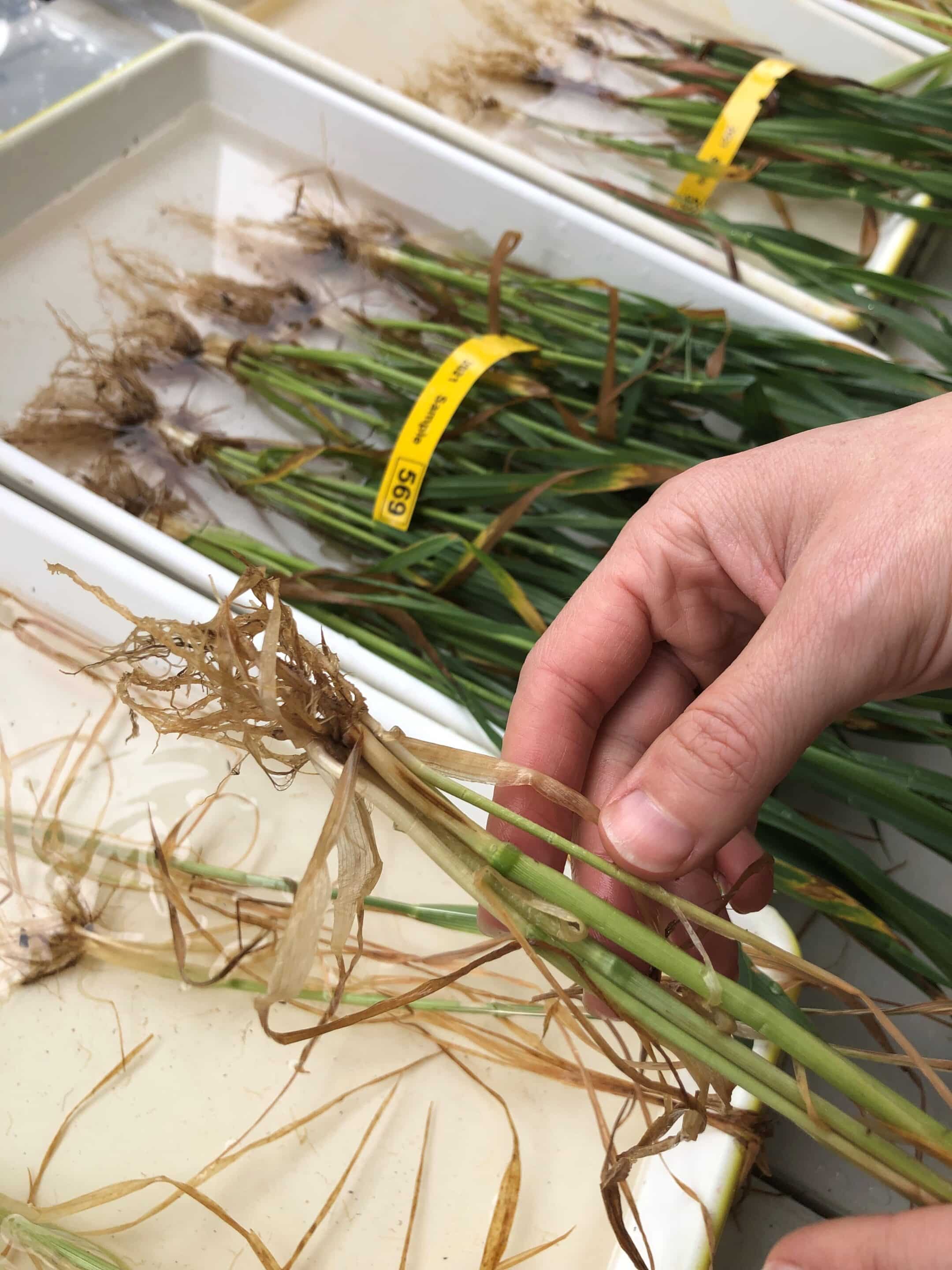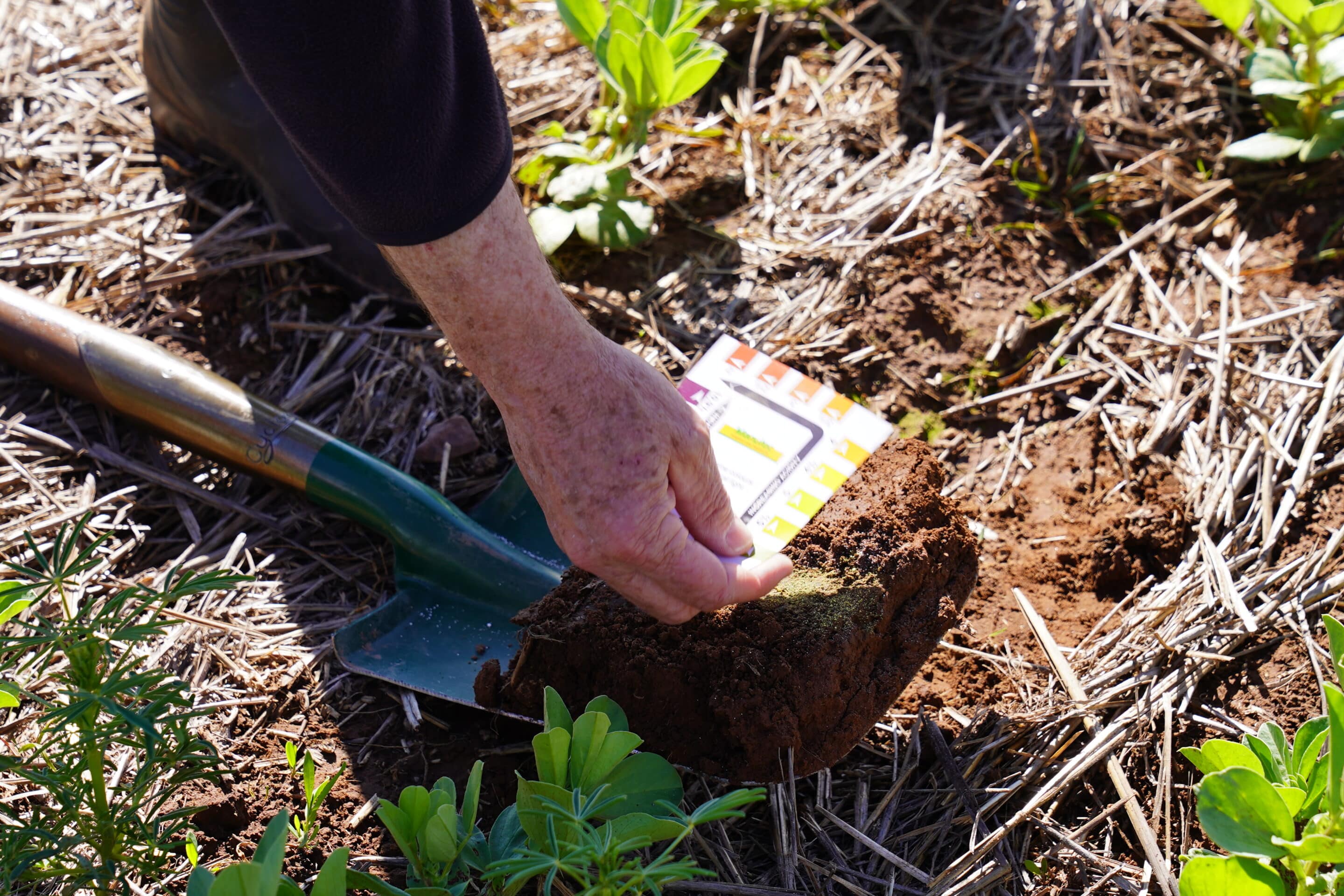START
FINISH
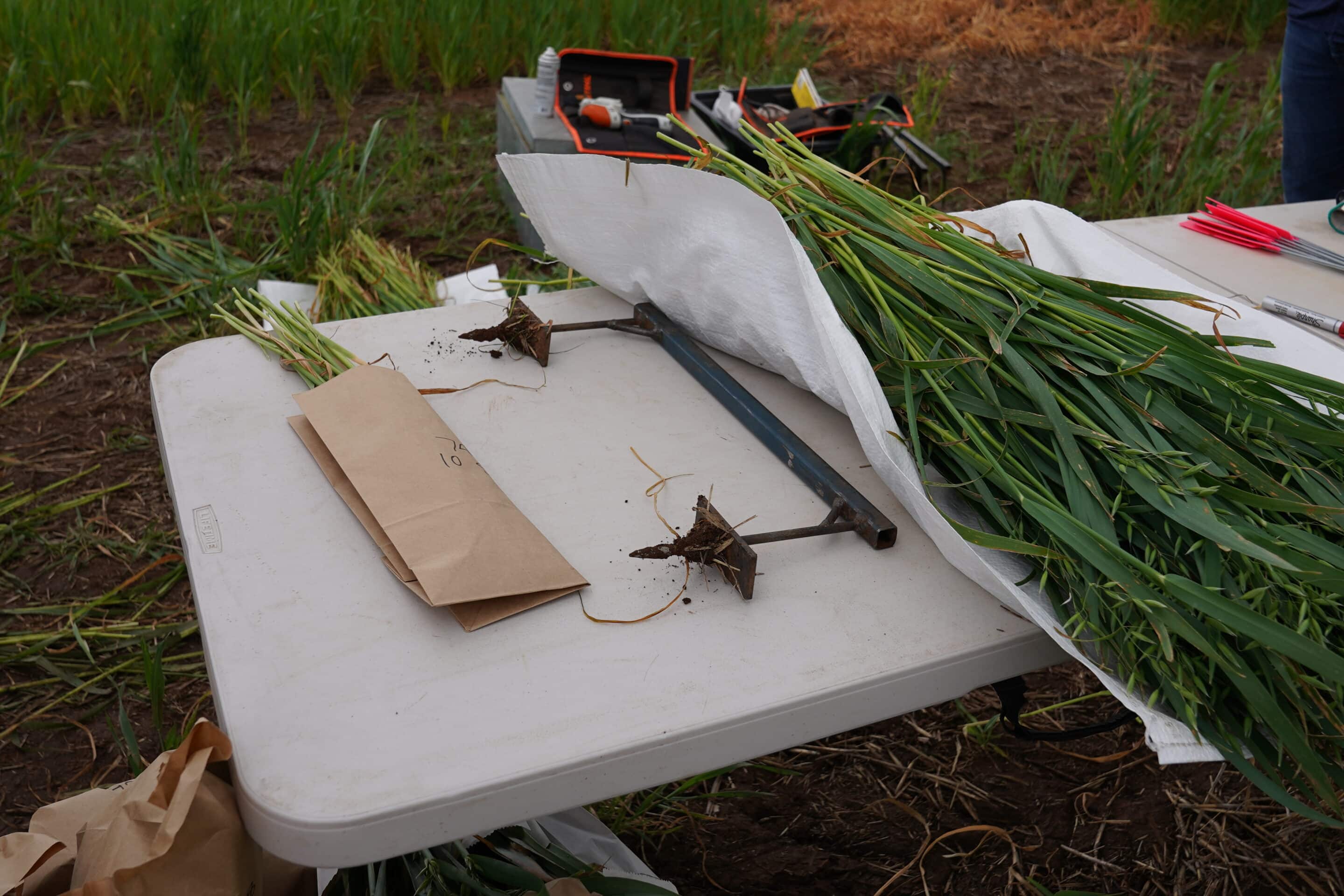
Summary
Field trials analysed oat performance at Lameroo, Jabuk and Tarlee at two times of sowing compared to Compass barley and Scepter wheat, for both grain and hay outcomes.
Oat flowering windows were similar to barley and wheat, resulting in flowering at the same frost-risk conditions.
Early sowing improved hay yields across the locations and seasons, and in general oats were able to match hay yields of wheat and barley.
Grain yield results were mixed, depending on seasonal conditions. In extreme frost conditions, oats out-performed wheat, potentially providing a lower risk crop in frost-prone environments.
Dual-purpose varieties showed good performance in both hay and grain, giving growers an opportunity to make in-season decisions.
Background
The critical flowering periods, and therefore optimal time of sowing, had not been well studied for oats in SA conditions. Additionally, an increase in the frequency and severity of spring frosts has led to an increased interest in dual-purpose oat varieties, to allow growers to aim for a grain crop while maintaining the option of an in-season decision to cut hay.
Research Aims
The core objectives of the project were to:
- Provide growers with new information on how to manage oats for grain, focusing on time of sowing to maximise yields and minimise quality issues caused by environmental stress during critical periods of growth.
- Understand how the quality of hay from a crop managed for grain compared to a crop that was managed for hay, in case a crop fails due to frost and the decision is made to cut for hay.
In The Field
Field trials were conducted at two locations – Lameroo (2019-20) / Jabuk (2021) and Tarlee – across three years – 2019, 2020 and 2021 – at two times of sowing (late April/early May, and late May) to produce grain or hay. Fifteen oat varieties were compared to barley and wheat at each trial, and fertiliser timing was varied along with plant density.
Results
The earliest to latest start to flowering between oat varieties was three to four weeks for the earlier sowing date, and two to three weeks for the later date. Many of the oat varieties showed similar development speeds to Compass barley and Scepter wheat, which are likely to flower within a similar frost risk window.
In all three seasons, early sowing resulted in higher hay yields than late sowing at both sites. Nutrition timing and crop density had no significant influence on hay yield at either site in 2019 or 2020, nor in Tarlee in 2021. In 2021 at Jabuk a higher seeding rate and more N upfront increased hay biomass by 0.5t/ha. In general, oat varieties were able to match or exceed Compass and Scepter hay yields at both sites.
In grain yield trials, results were mixed depending on the seasonal conditions at each site, with different outcomes for different sowing times and varieties. In 2019 at Lameroo and 2021 at Tarlee, under extreme reproductive frost conditions, oats had significantly higher grain yields (up to 1.5t/ha at Lameroo in 2019 and more than 4t/ha at Tarlee in 2021) than Scepter when flowering at a similar time. This suggests oats are likely to be a lower risk option in frost prone landscapes for both hay and grain.
In general, varieties bred for grain performed higher in grain yield, and varieties bred for hay produced greater hay yields. However, dual-purpose oat varieties were found to be most useful if wanting to make in-season decisions based on environmental conditions to switch from grain yield to hay or vice versa and achieve high yields and quality.
Project Participants
SARDI: Dr Courtney Peirce, Melissa McCallum, Brendan Kupke, A/Prof Rhiannon Schilling, Paul Swain, Cameron Mares
The Problem
An increase in spring frosts has led to an increased need to understand optimal flowering windows and the suitability of dual-purpose varieties when growing oats.
The research
Fifteen oat varieties were grown at two locations and two times of sowing in three seasons, compared to common wheat and barley varieties.
More information
A/Prof Rhiannon Schilling, SARDI
T: 08 8429 2926
E: [email protected]
Value for Growers
Key findings included:
- Oats sown early (late April/early May) resulted in higher hay yields than later sowing dates.
- Oats may be a lower risk option than wheat in frost-prone landscapes for both grain and hay.
- Dual-purpose oat varieties performed well for making in-season decisions between hay and grain.
The outcomes were communicated to growers at a number of field days, GRDC updates and articles.

